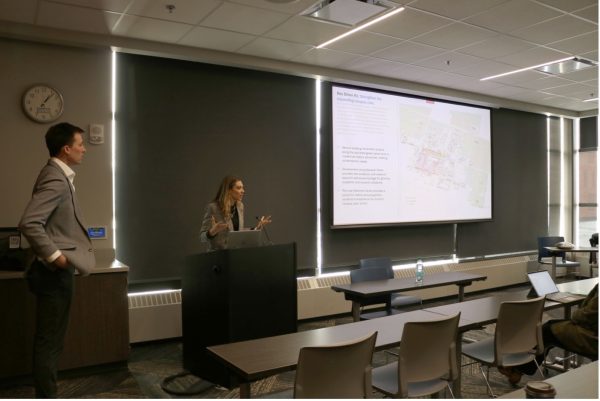Emergency call boxes: the ‘direct line’ to UPD
December 4, 2019
In 1998, 14 emergency call boxes were installed around campus. After 20 years and the release of the Guardian app, the boxes have become less commonly used and more of a mystery to students.
University Police Deputy Chief Michael L. Kilber still recognizes their importance today.
When the boxes were installed, cell phones were not prevalent. If a student didn’t have a means of calling, the emergency boxes provided a direct line to the University Police Department as students walked between dorms and parking lots.
Now, the emergency call boxes help UPD cover more ground and ensure safety around campus. Though the Guardian app is growing in popularity, if a student’s phone were to die or they did not have enough time to pull out their phone, the call boxes are always a stable backup.
When a student activates a call box, it skips dispatch and directly alerts all officers on duty, making the boxes a very efficient way to get help.
The call boxes have been known to prevent incidents, said the Deputy Chief of Police Kilber. There have been instances where perpetrators fled the scene because a call box was activated.
“Contacting dispatch takes too much time,” Kilber said. “The second you hit that button, an emergency alert is sent over police radio.”
Currently, there are 31 call boxes with two more waiting to be relocated. As the campus continues to grow and develop, UPD also continues to update and add more call boxes as necessary. One of the officers on campus is trained in crime prevention through environmental design, and part of his job is to decide where the boxes are most effective.
UPD is the only accredited campus police department in South Dakota and every bordering state. To achieve accreditation, officers must go through a three-year process with a full audit of the department.
Part of an officer’s accreditation and training by the International Association of Campus Law Enforcement Administrators is to test the emergency call boxes monthly. Officers are sent out, push the buttons and make sure the correct location is being transmitted.
“We have to be working to be ever-evolving in the approaches of public safety,” Kilber said. “Someday call boxes may become obsolete, but by the time that happens, we hope to have two more systems in place.”






















